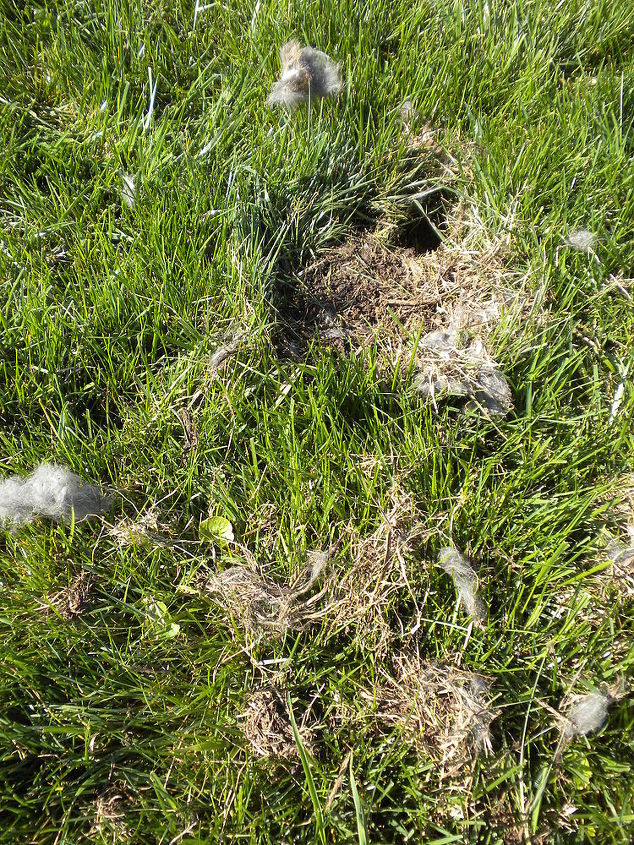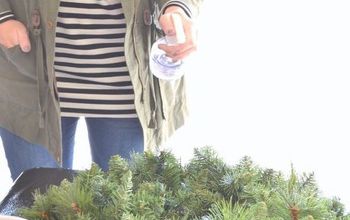How to get rid of Japanese beetle larvae in grass, birds ripping up ?
Related Discussions
GNATS - How to get rid of them?
Somehow my house and garden got tiny gnats that killed my fuchsia plant and fly everywhere. I have tried ALL the Web recommendations - soap and oil dishes, sand in th... See more
Marigolds growing! Should I pinch the buds?
My marigold plants are growing. I heard that pinching the buds until Autumn will allow them to grow without killing the plant. Is this true?
Growing garlic
Growing our first garlic, should we wait until the leaves are drying out before we pick it? Husband picked first one today along with our first potatoes.
How to keep mice out of your garden?
Hi everyone, I have mice in my garden destroying my vegetables and I have also noticed them in the barn and shed. Please can someone tell me how to prevent them from ... See more
What's the best flower/plant to grow in Texas?
I know that opinions vary, but what's your opinion?!I have great luck w Rosemary plants. Green all year long.
Can someone tell me what kind of animal this was in my yard?
I thought maybe a rabbit was burrowing in my yard, but it's almost dead center of my lawn (not a very smart rabbit). The hole is not very deep, and I replanted it onc... See more
Is Creeping Charlie in your lawn a good thing or a bad thing?
Is there a sure-fire way to get rid of Creeping Charley?





Method 1 Treating Grubs Naturally
Japanese beetle traps
Traps baited with a pheromone and a floral bait are commercially available at many lawn and garden stores. These are useful to determine when adults are beginning to emerge to help time chemical applications to reduce adult feeding damage. These traps also will help give some indication of the severity of the population in an area. Because the traps tend to attract Japanese beetle adults from the surrounding area, they may contribute to damage to nearby ornamentals and turf by attracting beetles to the vicinity of the trap. Although the traps are often sold as a control measure, it is not likely that trapping will reduce the population unless very large numbers of traps are used.Milky spore products
A product available in Michigan contains a bacterial spore that is supposedly effective in reducing Japanese beetle populations. There has been little evidence presented in the scientific literature over the past two decades that indicates any milky spore-containing products work. More research is needed to demonstrate the efficacy of milky spore products before we can recommend them for grub control.Japanese beetle management
Low-maintenance turf will tolerate five to 10 grubs per square foot; high-maintenance, irrigated turf will tolerate 15 to 20. Irrigation during fall and spring is the best way to avoid turf damage and loss. Non-irrigated turf can tolerate fewer grubs if periods of drought occur in the fall or spring. Irrigation during late June and early July may make a particular area more attractive to egglaying adults, however.
The presence of adult Japanese beetles in July is not an indication that turf damage will occur. If Japanese beetle is new to an area, sample for larvae before deciding to apply insecticides. Dig up a square foot of turf in several places in the yard after Sept. 1 to see if grubs are present in high enough numbers to cause damage. Also, watch and sample around thinning patches in the lawn and near any skunk, raccoon or crow damage.
Curative insecticides containing the active ingredients trichlorfon or carbaryl can be applied from Aug. 15 to Oct. 30 or March 15 to May 30 to reduce turf damage. All insecticide applications for grub control on turf should be immediately followed by 0.5-inch of irrigation to move the insecticide into the soil. A coffee mug can be used to measure the amount of irrigation applied. Granular treatments are more practical for low-maintenance turf. If a history of grub damage exists in an area, a preventive insecticide application may be the best option.
Preventive insecticides with the active ingredients imidacloprid, thiamethoxam or clothianidin should be applied between July 1 and July 15 for optimum control. Mow the turf to be treated prior to application to make sure there are no open flowers attractive to bees. Another active ingredient, chlorantraniliprole, is also an effective preventive treatment, but should be applied between May 1 and July 1 to be most effective. Preventive compounds do not work well after Aug. 15.
Adult control can be frustrating. If the population is high, insecticide applications may need to be made on susceptible plants every four to seven days while adults are active. When the leaves of susceptible plants are damaged, they give off chemicals that make them much more attractive to Japanese beetle attack. As plants are replaced or added to landscape plantings, highly susceptible plants should be avoided. Sprayable products containing the active ingredients carbaryl, bifenthrin, cyfluthrin, lambda-cyhalothrin or permethrin are the best choices for adult control.
Although most insecticides for Japanese beetle control can be purchased over the counter, remember that they are poisons and must be used carefully and according to the label. Always wear long pants, a long-sleeved shirt, rubber boots and rubber gloves when applying insecticides. Keep the wind to your back when applying insecticides. Be careful when mixing insecticides. Wear rubber gloves and do not spill any of the insecticide solution on your skin and clothes. If this happens, wash immediately with soap and water.